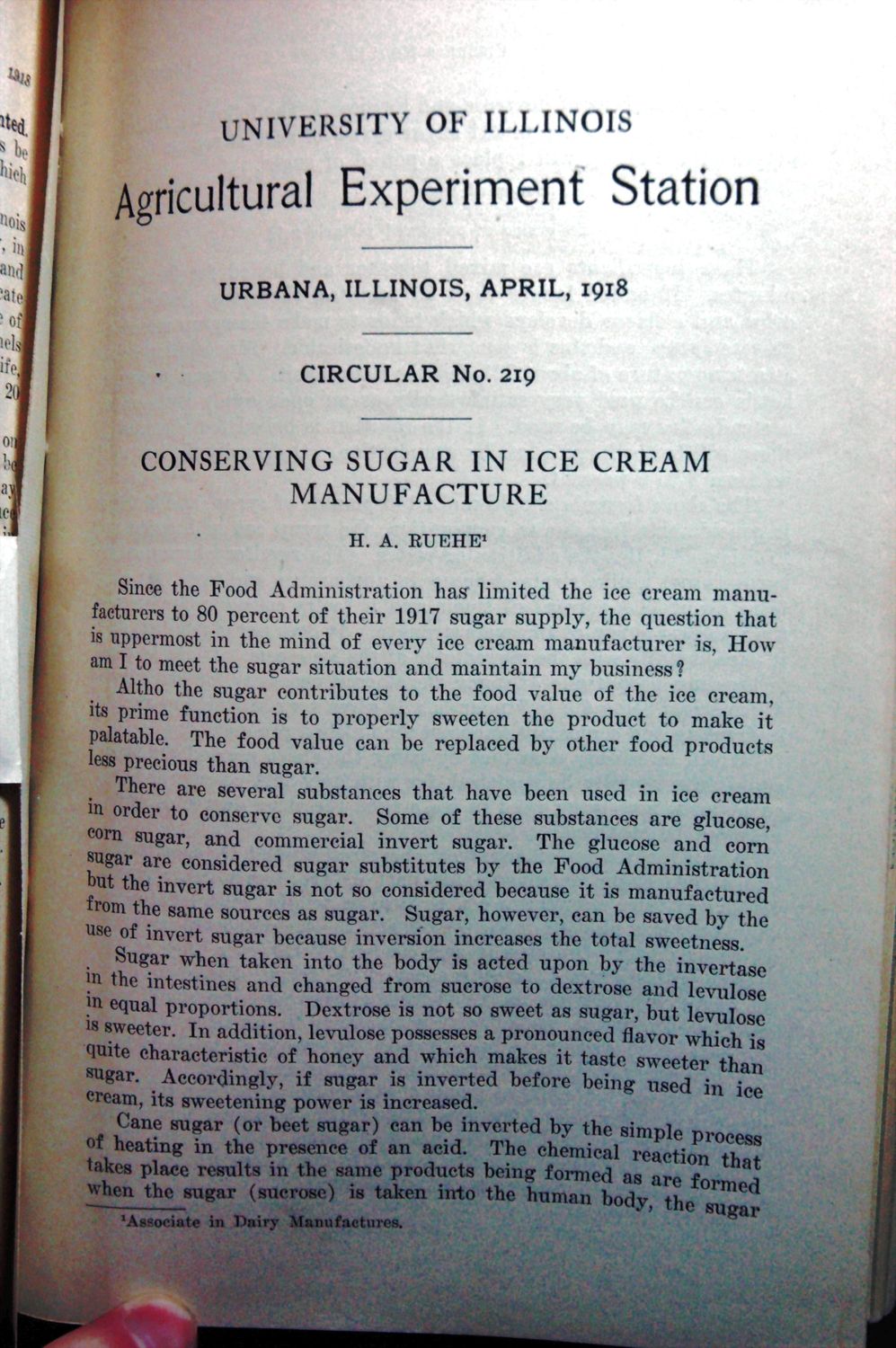| |
| |
Caption: War Publications - WWI Compilation 1923 - Article 40
This is a reduced-resolution page image for fast online browsing.

EXTRACTED TEXT FROM PAGE:
UNIVERSITY OF ILLINOIS Agricultural Experiment Station URBANA, ILLINOIS, A P R I L , 1918 CIRCULAR No. 219 CONSERVING SUGAR IN ICE CREAM MANUFACTURE H. A. RUEHE 1 Since the Food Administration has limited the ice cream manufacturers to 80 percent of their 1917 sugar supply, the question that is uppermost in the mind of every ice cream manufacturer is, How am I to meet the sugar situation and maintain my business ? Altho the sugar contributes to the food value of the ice cream, its prime function is to properly sweeten the product to make it palatable. The food value can be replaced by other food products less precious than sugar. There are several substances that have been used in ice cream t in order to conserve sugar. Some of these substances are glucose, corn sugar, and commercial invert sugar. The glucose and corn sugar are considered sugar substitutes by the Food Administration ut the invert sugar is not so considered because it is manufactured rom the same sources as sugar. Sugar, however, can be saved by the use of invert sugar because inversion increases the total sweetness. Sugar when taken into the body is acted upon by the invertase t }a the intestines and changed from sucrose to dextrose and levulose jn equal proportions. Dextrose is not so sweet as sugar, but levulose levulose Quite characteristic of honey and which makes it taste sweeter than sugar. Accordingly, if sugar is inverted before being used in ice cream, its sweetening power is increased. Cane sugar (or beet sugar) can be inverted by the simple Dm***, £ heating in the presence of an acid. The chemical reaotim, Vi? ! e results ii sugar (su< Assoc sugar *fe
| |